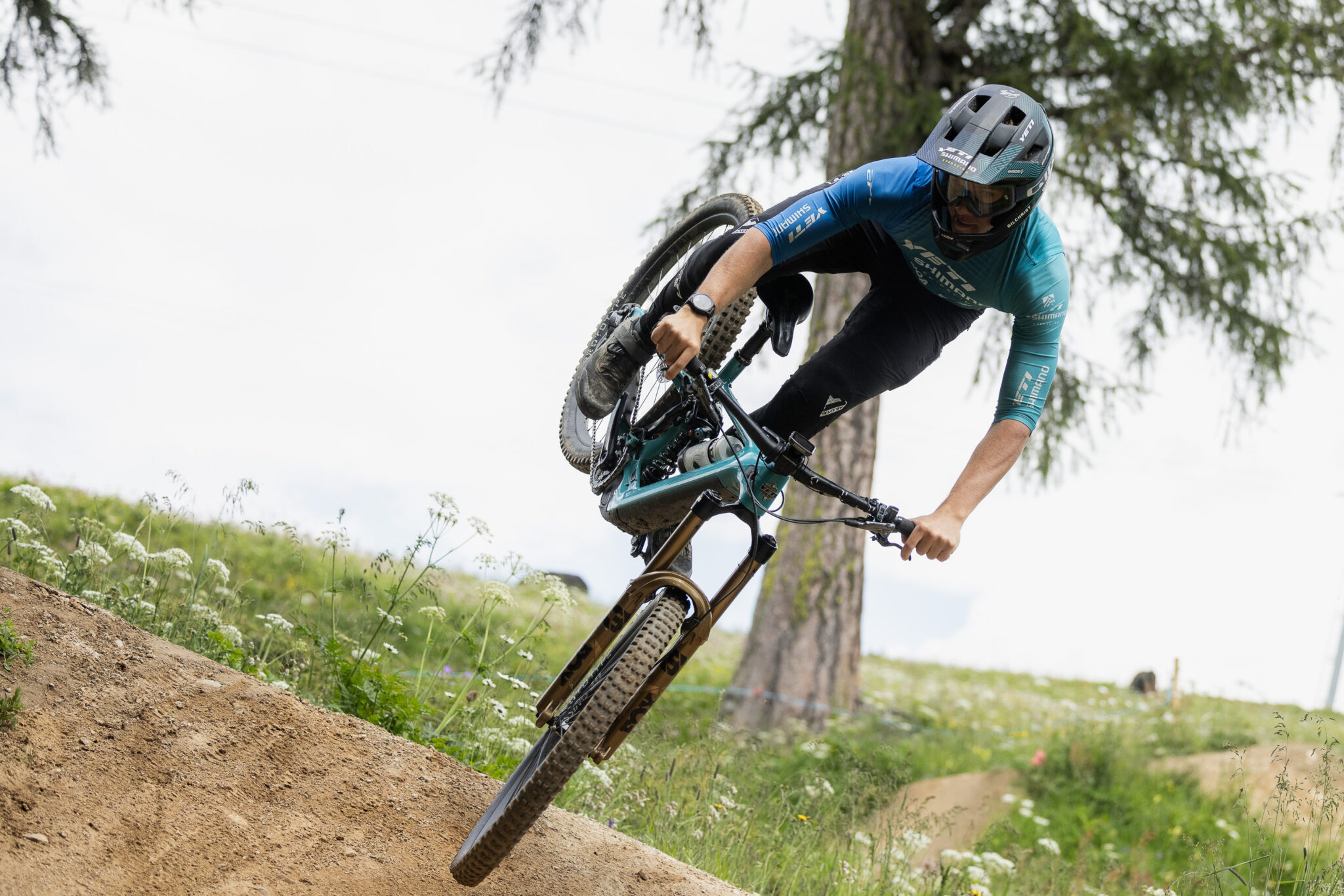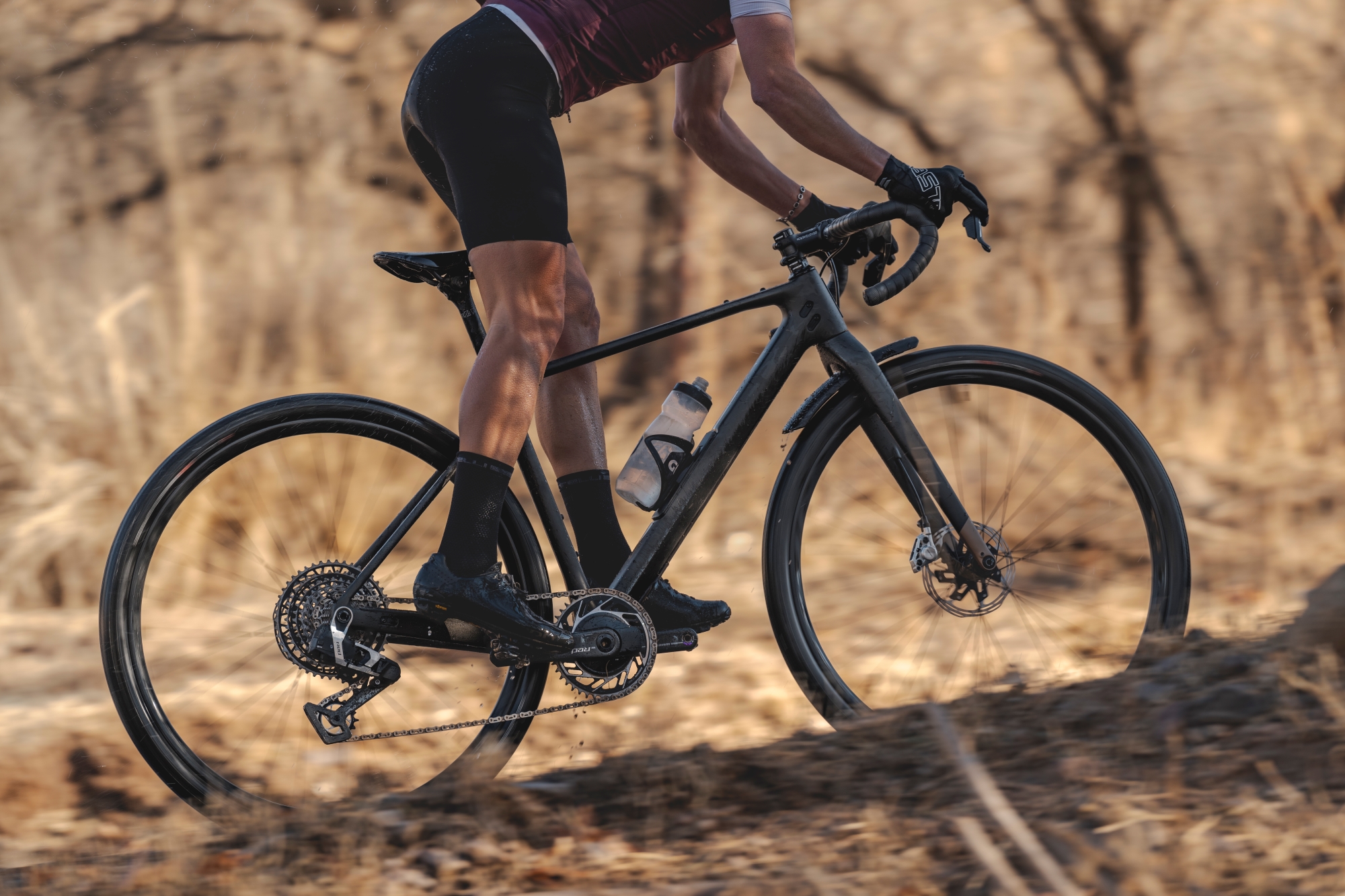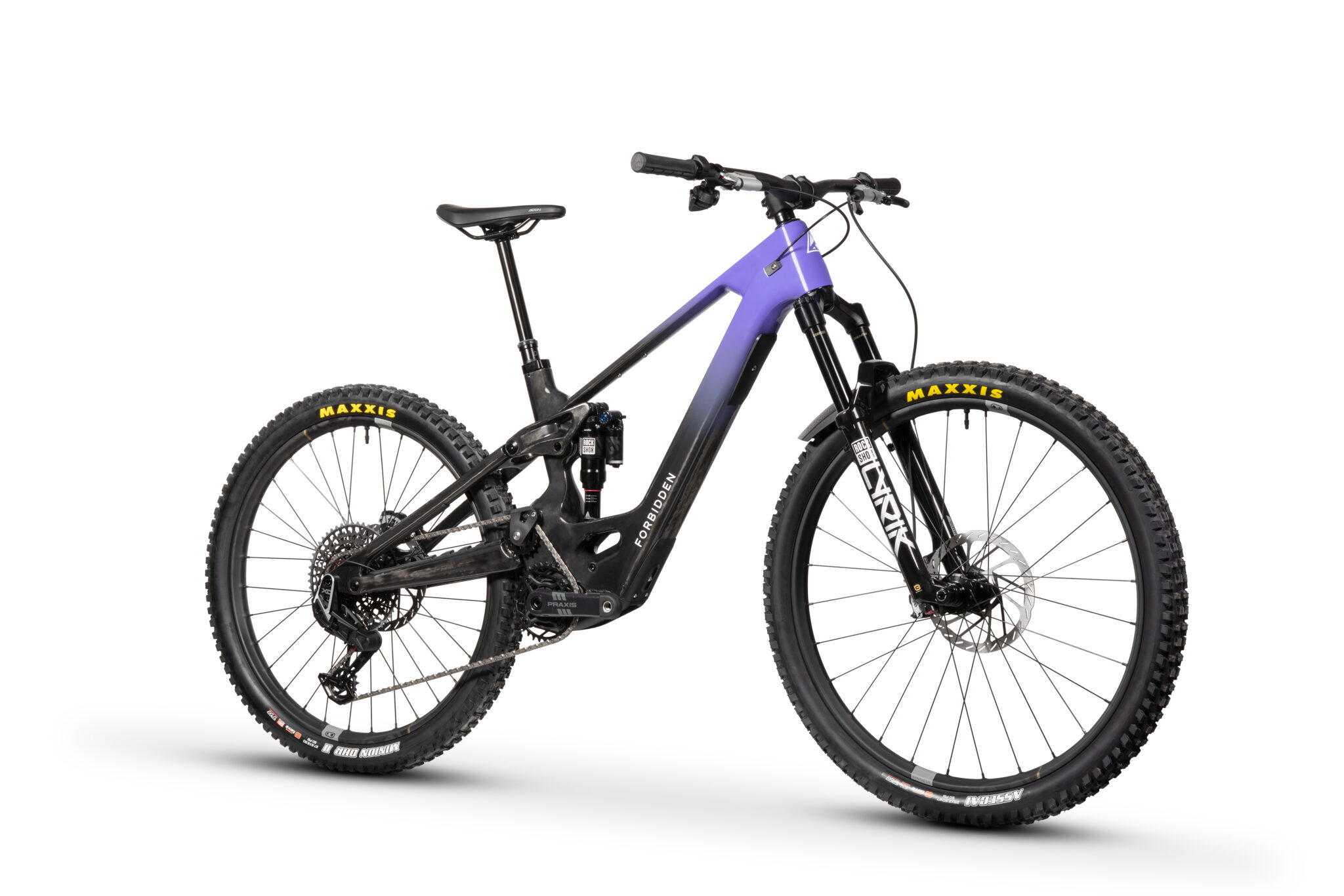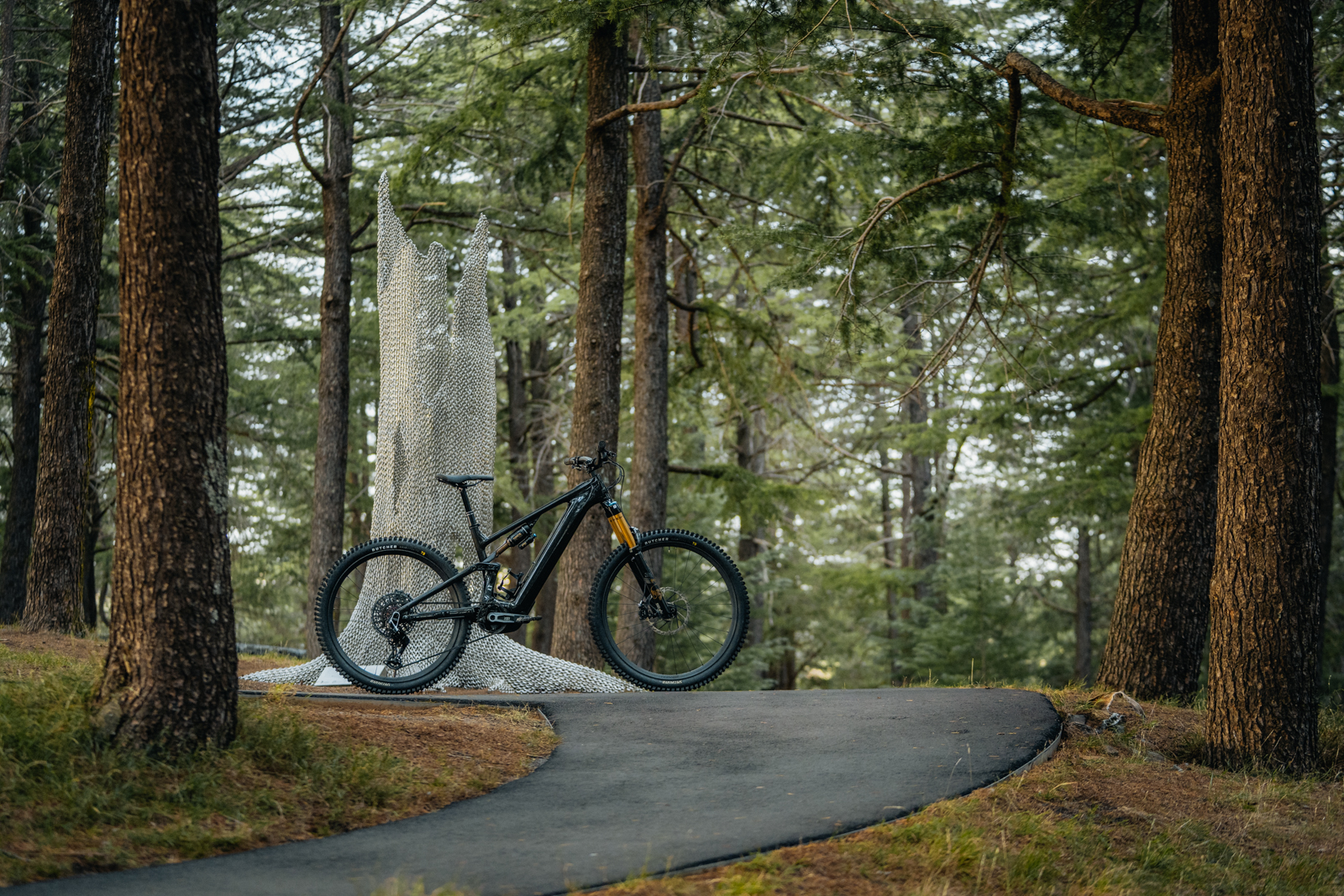New prototype Trek spotted beneath Trek Factory Team rider Dan McConnell!
Dan Mac in action at Toowoomba. Photo: Lachlan Ryan
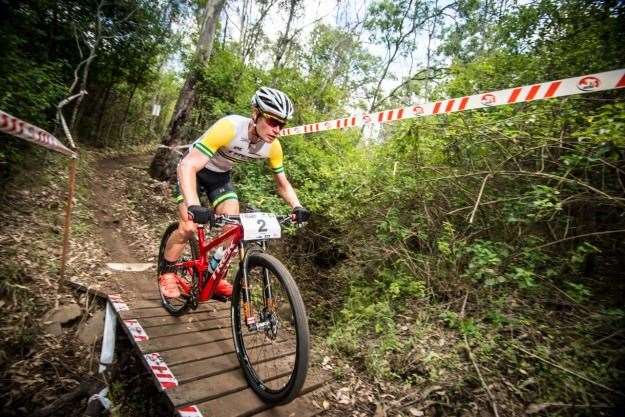 Dan Mac in action at Toowoomba. Photo: Lachlan Ryan
Dan Mac in action at Toowoomba. Photo: Lachlan RyanHeld over the last weekend of February, the final round of the Australian MTBA National series played out under a hot Queensland sun on the dusty trails just outside of Toowoomba. Elite riders flew in from all over the country to stake their claim on the National series. At the end of battle, it was an in-form Dan McConnell who took the glory on the day in the Elite Men’s race.
But it wasn’t just McConnell’s blistering performance on the racetrack that had people talking.
Currently ranked as the 3rd fastest XC rider in the World, McConnell spearheads the Trek Factory Racing team alongside fellow World Cup XC rider (and partner) Bec Henderson. Despite being relatively unknown on the world stage prior to his breakout win at Albstadt in Germany in 2013, the Australian two-time Olympian has been a regular sight on the podium ever since.
Alongside his racing success, McConnell has become an integral part of product development for his sponsors. He was one of the first riders to test the new Shimano XTR M9000 group set on the World Cup circuit, and he plays an ongoing role in suspension development with Fox Racing Shox and their electronic iCD platform.
Being a Trek-sponsored athlete, McConnell also provides direct input on the very bikes and Bontrager components that he races on, delivering invaluable feedback from the highest level of racing for Trek’s R&D team.
During the final round of the National MTBA Series in Toowoomba, McConnell was spotted racing on a bright red prototype Trek mountain bike. Showing a very different profile to the Superfly FS 9.9 SL that McConnell has been racing over the past season, this slick prototype bears a closer resemblance to the 120mm travel Fuel EX trail bike. However, a much sleeker physique would suggest this could indeed be a new XC race bike from Trek.
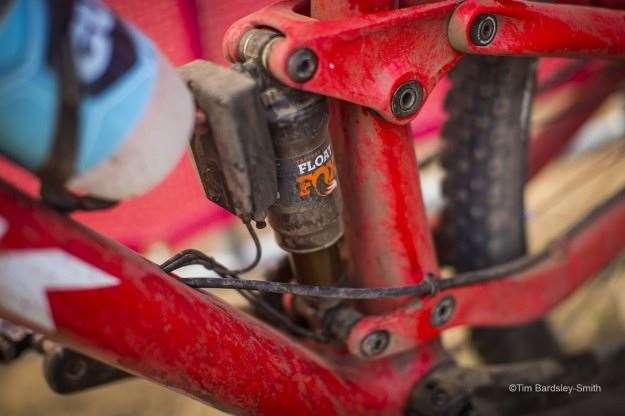 New rocker link (c) Tim Bardsley-Smith
New rocker link (c) Tim Bardsley-SmithRocker Link Suspension
Firstly, we’ll start with the key features. The prototype looks to be a full-carbon affair, and McConnell’s bike clearly has 29” wheels. There are new entry and exit ports for internal cable routing and Di2 compatibility. While it isn’t clear how much rear travel there is, given the 100mm Fox 32 fork up front, we’d hazard a guess that there’s 100mm out back too.
The most obvious difference between McConnell’s prototype and the current Trek Superfly FS platform is the orientation of the rear shock to be in front of, and inline with the seat tube. This layout bears a similar silhouette to the existing Fuel EX, Remedy and Slash models, which rely on a one-piece rocker link to compress the rear shock. The current Superfly locates the rear shock underneath the top tube, with a small swing-link activating the rear shock.
Because of this change in shock location, the rear shock is now mounted to an extension of the chainstay, which Trek refers to as their Full Floater design. The primary purpose of the Full Floater design is to provide a more bottomless feel to the end of the suspension travel, though it also adds new scope for suspension tuning.
While this arrangement looks very similar to the Fuel EX, one key difference is the lack of a DRCV shock. Rather than the dual-air chamber DRCV unit found on the Fuel EX, McConnell’s prototype looks to use a conventional air can on the Fox Float iCD rear shock, with standard mounting hardware.
Upon closer inspection of the prototype’s back end, hollow alloy pivot hardware has been employed for weight reduction. On the rearmost pivot on the rocker link, you can also see an offset chip that is known as the Mino Link on Trek’s longer travel bikes such as the Remedy and Slash. This offset chip is designed to allow the user to adjust the bikes head angle and BB height by flipping it around to alter the rocker link position.
Interestingly, Trek don’t use a Mino Link on the Fuel EX trail bike, so it’s unusual to see it on McConnell’s race bike. That said, the Mino Link on McConnell’s prototype could well be employed for field-testing of two different geometry settings.
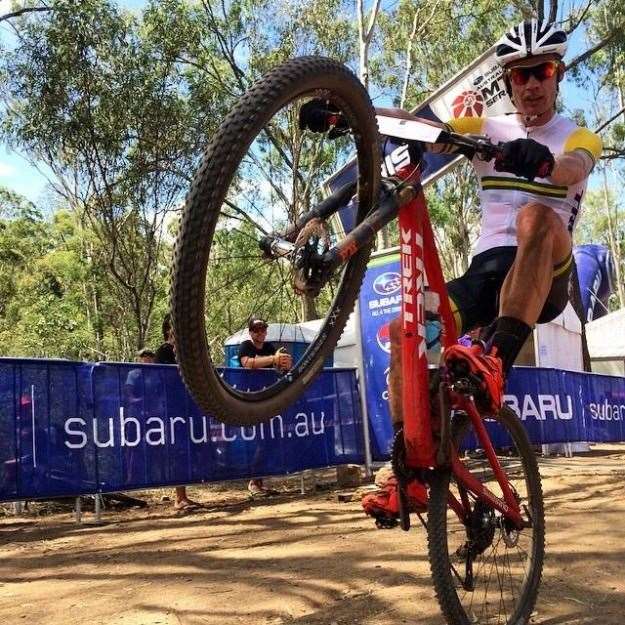
Familiar Technologies
Despite the change in suspension layout, there are a number of frame features that look to have carried over from Trek’s existing flagship race bikes.
McConnell’s bike is fitted with a 2×11 Shimano XTR Di2 drivetrain, with a direct-mount front derailleur showing that Trek won’t be ditching the front mech anytime soon. 140mm post mount brake tabs allow for a smaller rotor to be installed without need for an adapter (McConnell’s bike uses Shimano XTR Freeza rotors with a 160mm front and 140mm rear). At the dropout, the familiar ABP concentric pivot is designed to minimise braking input on the rear suspension.
A zero-stack tapered head tube conceals two cartridge bearings that nestle directly into the carbon frame. This net-moulding process eliminates the need for headset cups or bonded alloy sleeves, making for a lighter and sleeker front end.
The prototype appears to have retained the BB95 bottom bracket assembly that has been a key technology for Trek’s high-end carbon mountain bikes. This massive 95mm wide BB shell relies on two Enduro cartridge bearings that are pressed into the net-moulded bearing seats – just like the headset and with no plastic or alloy cups required.
Assuming the system is unchanged, the new frame will only accept standard 24mm crank spindles. Trek have held out against the BB30 standard both on the road and off it, and given the close relationship between Trek and Shimano (who also don’t support the BB30 standard), that doesn’t look like it will be changing in the immediate future.

Is this the new Top Fuel?
Those who are familiar with Trek’s previous mountain bikes will remember that the curtains closed on the flagship Top Fuel race back in 2012. At the time, the 100mm travel Top Fuel was renowned as one of the quickest bikes on the XC race circuit. As 29ers got better and better though, the 26” Top Fuel was eventually killed off by one of its own; the Superfly.
Given the overall profile of McConnell’s race bike and the fact that this appears to be a very polished prototype however, it looks like the Top Fuel could very well be set to exact its revenge.
The Superfly FS is coming up to 6 years old in 2015, and despite several frame and suspension updates, there is every chance that Trek have squeezed every millimetre of performance out of the existing platform. The new rocker link design likely offers new suspension kinematics for Trek’s engineers to work with, though the new layout could also open up new geometries. McConnell’s prototype sports a very low-slung top tube along with a compact rear end. Along with the new shock location, there has been a substantial shift downwards of the bikes centre of gravity.
All of that said, Trek are very well versed in testing real-world prototypes in order to prove or disprove certain theories. Many of those prototypes have never seen the showroom floor, so there’s every chance that this prototype could see the same fate.
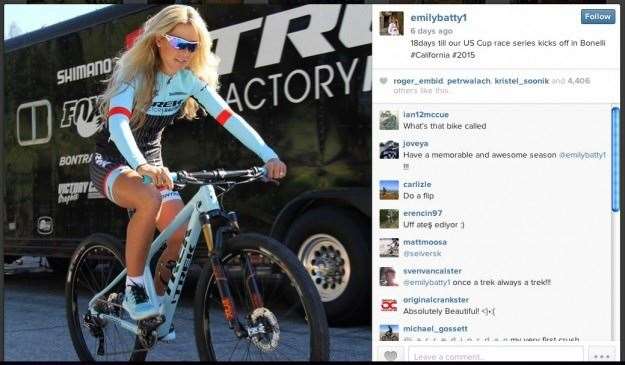
29” or 27.5”?
Of course one question remains unanswered in regards to McConnell’s race bike, but there are clues elsewhere in the Trek Factory Racing team. In recent weeks, Canadian World Cup XC racer Emily Batty has leaked two photos of her new Superfly photo through her Instagram account.
Aside from her stellar performances on the bike, Batty is also well known for her short stature and the aggressive inverted stems that she requires to get her handlebar low enough on her Superfly 29er.
One of Batty’s latest photos shows her warming up on a prototype Superfly hardtail. We know it’s a new bike due to shape of the seat stays along with the Di2 cable ports at the headtube. What we have also recognised is just how much more in proportion Batty is relative to the bike and its wheels. And indeed a closer look reveals that the Fox 32 Float fork up front is actually a 27.5” fork (check out the extended dropouts). Batty’s hardtail is fitted with Maxxis Ikon tyres, presumably because Bontrager do not have race rubber available in a 27.5” diameter as of yet.
Last year, Trek rolled out Smart Wheel Size. The idea was simple; for their Medium-sized hardtails and above, the bikes came with 29” wheels. For Small and X-Small sizes, they came with 27.5” wheels. However, this concept only went up to the $2999 Superfly 9.6.
Our prediction is that for the new Superfly hardtail, Trek will be extending its Smart Wheel Size concept through to the higher end models too. If we were to speculate further, we’d suggest that the new full suspension bike that McConnell has been spotted racing on may also employ 27.5” wheels for the smaller frame sizes.
Whatever the case, it certainly appears that Trek is deep in the process of resetting the bar for their flagship race bikes. We’ll have to wait for more information as it comes, but given that the near-production finish of these bikes, it looks like the answer isn’t far away…
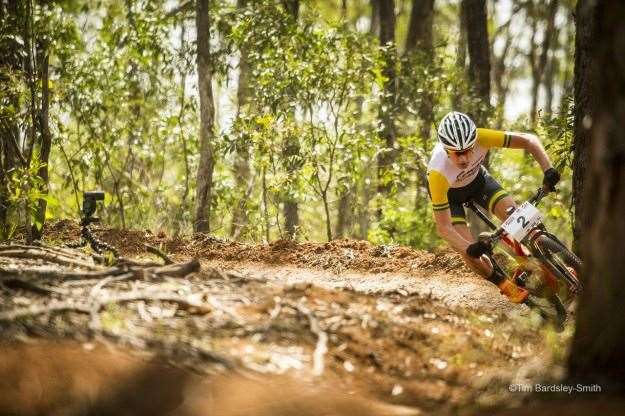 Dan McConnell rails through Toowoomba. (c) Tim Bardsley-Smith
Dan McConnell rails through Toowoomba. (c) Tim Bardsley-Smith

